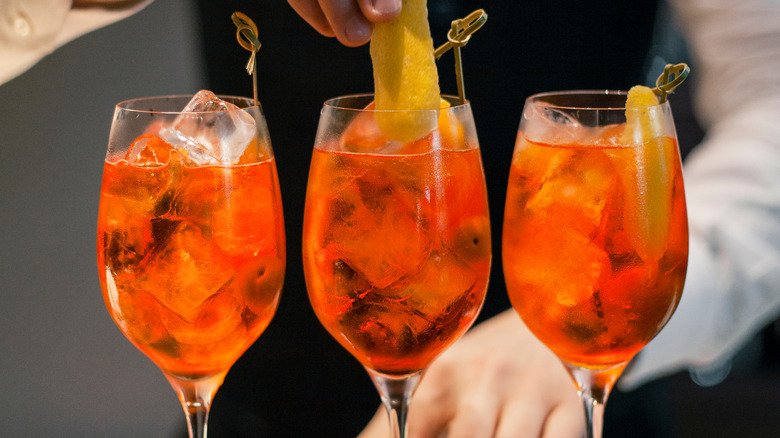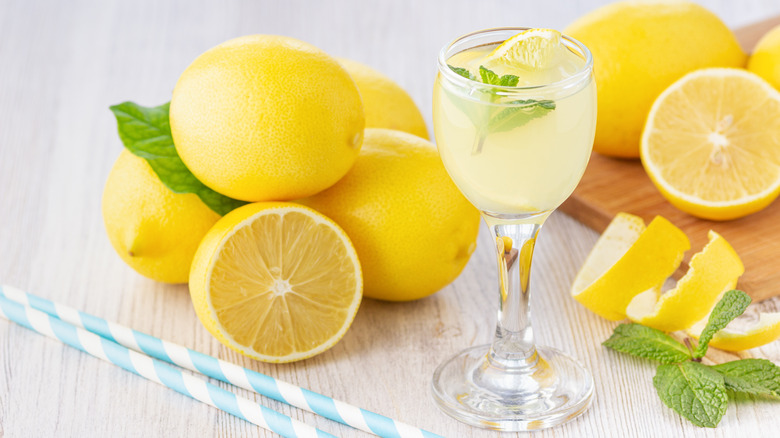The Italian Spritz Cocktail You Probably Didn't Know About
If you ever take a trip to northern Italy, you'll likely indulge in a spritz or two. What exactly is a spritz? Love and Olive Oil describes it as a combination of Prosecco and an aperitif. Aperitifs can be made of a wide variety of ingredients, making the drink taste fruity yet bitter. One of the most popular spritzes in Italy (and beyond) is the Aperol spritz. According to Tuscany Now and More, the beverage is a simple mix of Aperol (a popular bitter orange aperitif), Prosecco, and chilled soda. Aperol, the basis of this drink, was invented in 1919 by Luigi and Silvio Barbieri, and the cocktail was first made in the Italian city of Padua.
The Aperol spritz has enjoyed several moments in the spotlight, and according to Paste and Jason Slark, it's been rising in popularity this year as well. Slark is a wine steward at Venice's Bar El Borrachero, so he knows a thing or two about traditional Italian spritzes. His theory? "There were two major influences that pushed Aperol Spritz to the top: a rising consumer trend of 'light' drinks for social engagements and pro-natural young adults who want to stray away from artificial agents." That may be true, but if you're getting tired of Aperol, a new type of spritz is gaining its footing in Italy.
A sour twist on a classic spritz
If you've already tried an Aperol spritz, you might be excited to learn that there are plenty of other spritz varieties, including one imbued with the tang of citrus. Though the Italian digestif limoncello is often consumed by itself after a meal, it can also make for a zesty limoncello spritz that Italian Recipe Book notes is popular throughout southern Italy. Per Casual Foodist, the ingredients are similar to an Aperol spritz: Prosecco, limoncello, and soda water. Limoncello on its own is a lemon-based liquor made by combining lemon zest with sugar, water, and another form of liquor, such as vodka or grappa (via Spoon University).
According to legend, limoncello was created by Lady Maria Antonia Farace in Capri, Italy. Farace wanted a drink to offer her guests, so she would grow her own oranges and lemons. Today, the lemons still come from Capri, but they can also be grown in Sorrento and the Amalfi Coast. If you're not into the sour flavor, Spoon University notes that other options are also offered in Italy, such as meloncello, pistachiocello, and fragoncello, which tastes like strawberries. If you don't find yourself in Italy anytime soon, you can still enjoy the taste with this homemade limoncello recipe.

